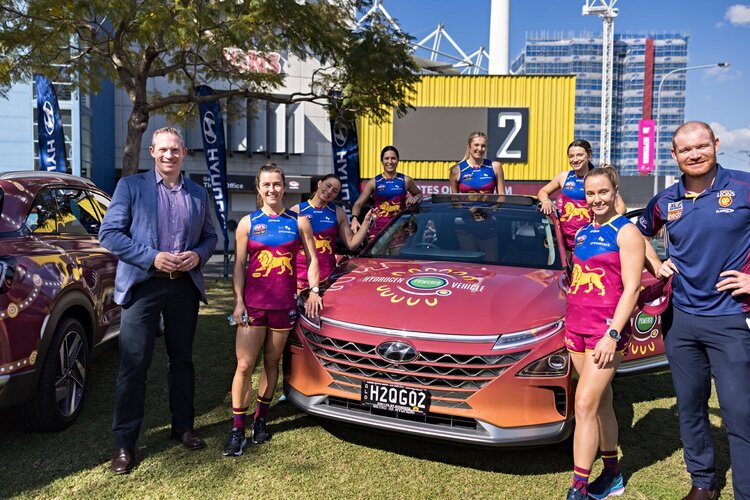Five new hydrogen vehicles have joined the Queensland government fleet.

Energy renewables and hydrogen minister Mick de Brenni unveiled the five zero-emission Hyundai Nexo fuel cell electric SUVs, the first in the state, over the weekend.
It’s the second time hydrogen vehicles have been deployed to Australia government fleets following the procurement of 20 Nexos by the ACT government, which hit the road in March.
Local government is also making a foray into hydrogen vehicles, with Moreland City Council in Victoria pioneering the technology with a pilot project to replace its existing rubbish collection fleet with fuel cell truck equivalents.
Three-year trial
Queensland government fleet manager QFleet manages more than 10,000 passenger and light light commercial vehicles, including 100 electric vehicles.
The new hydrogen vehicles, which are decorated with Indigenous-inspired designs featuring the Brisbane River, will be available for frontline health staff, educators and community workers.
They will be tested in on-road conditions over the next three years to demonstrate the efficiency of hydrogen in passenger vehicles and potentially lead to a rollout of hydrogen for trucks, trains and marine purposes, Mr de Brennis says.
The new vehicles will be fuelled by locally produced hydrogen.
“Leasing them as part of our trial of fuel cell electric vehicle technology highlights the fact that QFleet continues to drive Queensland’s renewable transport options,” the minister said
“This trial aims to accelerate the uptake of hydrogen technology.”
Queensland is aiming to establish itself as a hydrogen superpower, and supporting a local hydrogen industry is a key part of the state’s covid-19 recovery plan.
Last week the government-owned North Queensland Bulk Ports Corporation (NQBP) also signed an MOU to build a renewable hydrogen production, storage, and export facility within the Hay Point port precinct.

Refuelling infrastructure needed
The Nexo is the world’s first hydrogen feul cell SUV and part of Hyundai’s eco-mobility portfolio along with hybrid, plug-in hybrid and battery electric vehicles.
According to Hyundai, the Nexo offers a 666km driving range with a 3-5 minute fuelling time. It is zero-emissions and doesn’t admit anything other than water vapour from its exhaust.
Hyundai is working governments and stakeholders to implement CSIRO’s Hydrogen Road Map and the National Hydrogen Strategy
The road map notes the biggest obstacles to uptake of hydrogen vehicles are capital costs and lack of infrastructure to support hydrogen vehicles including refuelling stations.
Australia’s first public hydrogen refuelling station opened in the ACT in March to service the ACT fleet and spokesman told Government News a temporary refuelling station is being run in Queensland at a research centre in Redlands.
It’s expected that a permanent commercial facility will be in operation by the end of the year.
Mr de Brenni says QFleet plans to add 44 more electric vehicles to the fleet by the end of this year and has a target of 288 by the end of 2022.
“The Queensland government has set a target of zero net emissions by 2050 and the transition to low and zero-emission electric vehicles will be a significant driver of this target being met,” he said.
The transport sector is Queensland’s second largest source of greenhouse emissions.





Great initiative well done Queensland!, now if only the Andrew’s Victorian Government could be so bold…